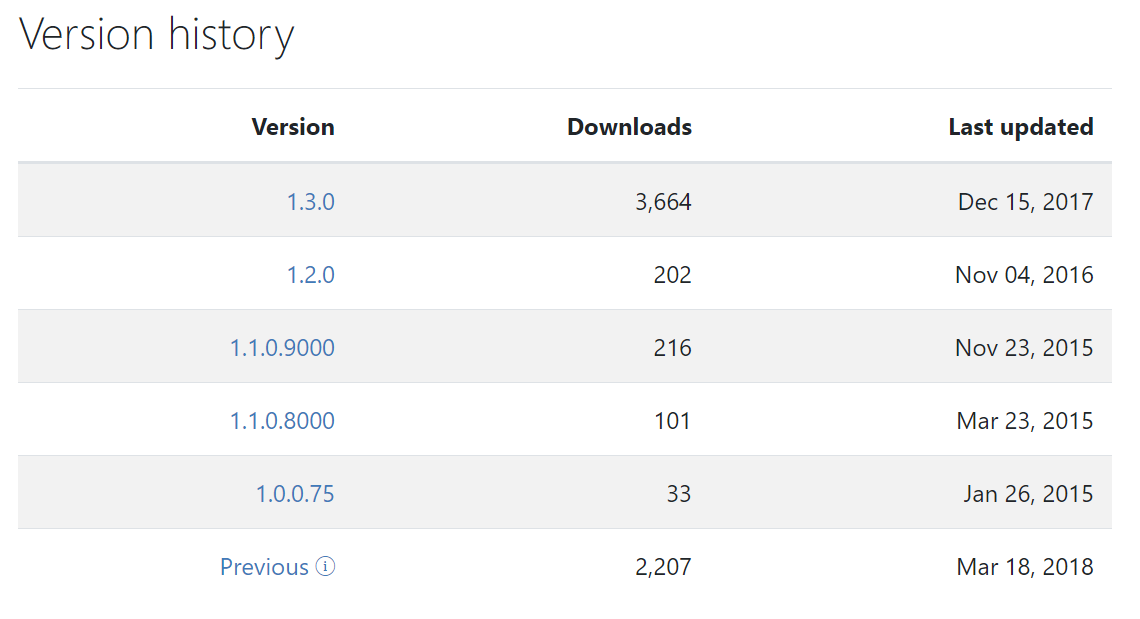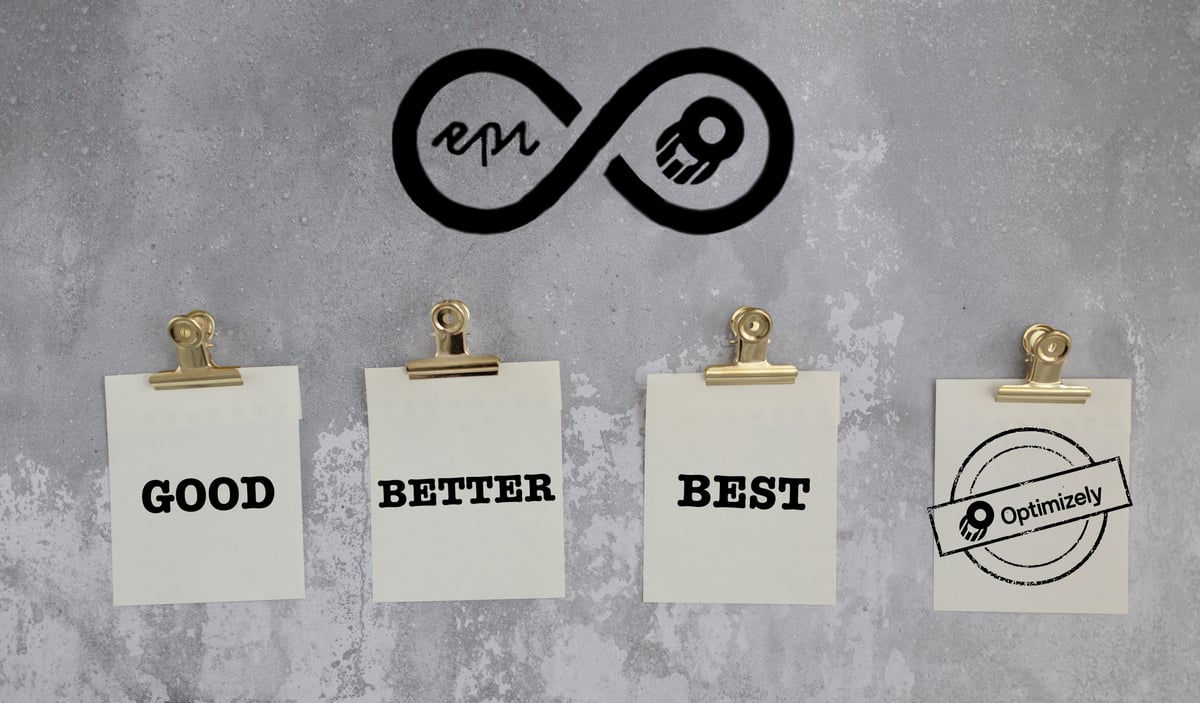When one of the market leaders in digital experience / content management / e-commerce acquires the market leader in Optimization and Experimentation - great things can be expected. But how will it differ from the optimization techniques used by Episerver customers today? Here are my thoughts.

As I often do, let me begin this blog post with a bit of a nostalgic history lesson...
Once upon a time, many years ago - it must have been around 2014-2015'ish - I was asked to help get the first Optimizely-Episerver integration to market (first version was released in January of '15). I only knew Optimizely by reputation at the time - but when I first tried it, I was impressed. The initial experience was, that when you went to the Optimizely website you were met with a textbox where you could paste a url from your own site. Then you'd click one button and all of a sudden you'd find yourself in Experimentation heaven. You would see a view of your own page and content, but all of a sudden you could change everything on the page and conduct experiments with it!
Experiments like "what if I change this text" or "what if I move this image there" or "what if this was blue instead of red". And then, if you simply embedded a piece of script on your site, the experiments would run in the real world, measure conversions and pick winning combinations. Awesome - and impressive how much could be achieved - with only a few lines of embedded script on your pages.
But I also remember, that while being impressed, we were also struggling a bit with the "integration". Because - honestly - how much integration can it be, if all it should do is to inject a piece of javascript?! It felt a bit like cheating.
It was about the same time, the importance of testing and experimentation in order to optimize your content was becoming increasingly obvious to us in the Episerver product management team. And my personal opinion at the time (and to this day) was that experimentation and A/B testing would become essential in content creation - and it really should be part of the core of Episerver CMS, rather than something we relied on 3rd party for.
Cause without the ability to experiment you would always be left to your own best bet. There is no point trying to optimize if you can't tell whether or not it's working.
In fact, both plans and code was already underway internally at the same time. Already in 2014 we had launched the Self-Optimizing block - a fire-and-forget multivariate testing tool that I believe to this day is a piece of misunderstood genius - and later, in October of 2016 the official Episerver AB Testing functionality was introduced. It's also interesting to note that it was also around 2015 that Google Optimize launched - so this was a global trend at the time.

Here is the version history of the 'old' Optimizely/Episerver integration.
Where are we today
Now, that we looked back - it's interesting to see where we are from a product standpoint today - without taking the latest acquisition into consideration.
As you can see above, the last version of the Optimizely integration was from 2017. The A/B testing and Self-optimizing block are being (somewhat) maintained and I believe both are still functional. The A/B testing add-on has been downloaded ~245.000 times and the Self-optimizing block about half as many (note: Many automated build-environments download packages nightly, so you can, at most, use these numbers to get a relative perspective on usage). The Episerver/Optimizely module has been downloaded less than 7000 times, and Oshyn's competing integration around 300 times.
An interesting point to note here is that no major new functionality has been added to any of the addons. The major planned 'vNext' features for both self-optimizing block and A/B testing never seems to have made it through the priotization bottleneck. There are probably many good reasons for this. We all know the tremendous growth Episerver has experienced and how the product portfolio has grown - something which tends to put a lot of pressure on feature wish-lists - but I would argue that it is probably also due to the fact that for many customer wins, A/B testing and perhaps even Multivariate testing might have been a requirement to win the deal - and that purpose is already met. It's more of a checkbox requirement - which is sad, cause some of the ideas that were floating around for future development where really great.
Will that all change now?
Optimizely today is so much more than the clever website testing platform I first saw in 2014. Over time it has grown into a fullblown enterprise experimentation engine, that takes the experiments to the next level and across all the channels. What we used to know as a 'website' and a 'cms' has grown into an 'omnichannel digital experience' and a digital experience management cloud. And - aside from helping us all win the buzzword bingo - the truth is companies have grown tremendously digitally over the last 5 years. And perhaps even those most over the last 6 months where the world has changed so much. All of a sudden online has grown from a major revenue source to perhaps the only revenue source as Corona has locked down physical stores.
'There is no experience without experimentation'
(Alex Atzberger, source)
And in an Episerver context, the combination of ecommerce, web experience management, AI recommendations and campaign management has placed Episerver in a great position to be the platform of choice for many. But with one important gap: being able to experiment across it all. A gap that Optimizely is supposedly there to fill.
Because whether you should show an image, a headline or a big red buy button on your front page is all of a sudden not enough to test anymore. If you truly want to optimize constantly (and you should) you'll be wanting to experiment with everything you can. Ranging from which campaigns you send out, how you advertise and attract visitors, how you personalize, what your AI recommends, which checkout flow is optimal, and which promotional offers and pricing will have the biggest impact with each target group. And that's not easy. I hope Optimizely is the tool that will not only be able to do this - but also empower the Episerver customers to accomplish this.
One size doesn't fit all
Another key feature I have been missing all these years in the earlier mentioned Episerver testing tools, is a way to target A/B tests to different audiences. Your website visitors arrive at the site with different needs and expectations - and might not all enjoy the same optimizations made.
In fact, ever since Episerver CMS 6R2 from 2011, a key selling point has been the ability to easily customize and personalize the user journey through a website - with different messages for different audiences. First, in the shape of Visitor Groups - and later with AI driven 1-1 personalization in the shape of content and product recommendations.
Now, just like Episervers comes with Visitor Groups for extendable rule based segmentation, Optimizely has Audiences - something that appear very similar - and which can be used to target experiments towards different segments. If these concepts an be merged smoothly I see great potential.
The main challenge
"So, you guys are doing A/B testing, that's great! How is it working out for you?", I usually say when I see the old A/B testing addon installed in a new client's Episerver environment.
- "What? Oh that. Well, we had it installed when the site was built, but never really got around to using it". Is the typical answer I get back. Of course - occasionally there is a larger client where one of the editors tried the A/B testing when she got back from Episerver training class - but that's the exception.
Digging into the problem a bit further, it turns out that in many cases the editors might have been taught how to use it (and it really isn't hard) - but it's never been a priority to actually do it.
Now - if that is the state today, and now we are getting a tool that can do a lot more - I could fear that it might be solving problems that the users aren't even aware they are having at this time. And I also fear that even if they know they need to experiment and optimize the complexity of doing it might be overwhelming to many.
Yet, it's worth keeping in mind that this might not be a tool for everybody from the start. According to the Cheddar interview with Alex Atzberger, there are already 20 joint customers - and that makes a lot of sense. Large, international organizations with a strong focus on e-commerce and a massive turnover already love Episerver - and they are just the type of company that would benefit from this technology. They are already keen to optimize where they can and have data-analysts going through their visitors behavior because they realize that even the smallest improvements can have a significant impact on the bottom-line.
When you get to be Google-sized you might find it worth to experiment with 41 different shades of blue...
In conclusion
I think this is a great strategic move - and a nice addition to the enterprise e-commerce / experience management tool stack. It will also make a great story to show and tell when engaging with new clients - however the biggest challenge will probably be to integrate it with the existing portfolio in a way that will make even the mid-market customerbase engaged in constantly experimenting and measuaring the effects. Cause they should.
I hope you enjoyed this analysis. Feel free to leave me a comment with your thoughts.
P.S.
If you want to learn more about the technical capabilities of Optimizely, I found this video from Testing Theory to be a good introduction.

